Created Using Still Images Taken By The Cassini Spacecraft During It’s Flyby Of Jupiter And While At

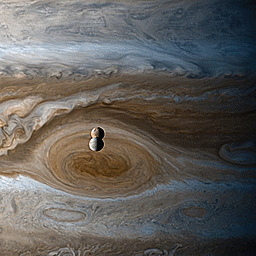
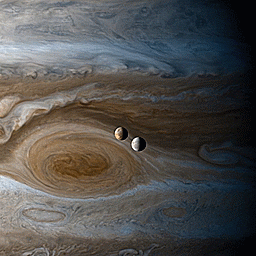
Created using still images taken by the Cassini spacecraft during it’s flyby of Jupiter and while at Saturn. Shown is Io and Europa over Jupiter’s Great Red Spot.
NASA/JPL-Caltech/SSI/CICLOPS/Kevin M. Gill
More Posts from Riekod and Others

Milky Way Above The Ocean
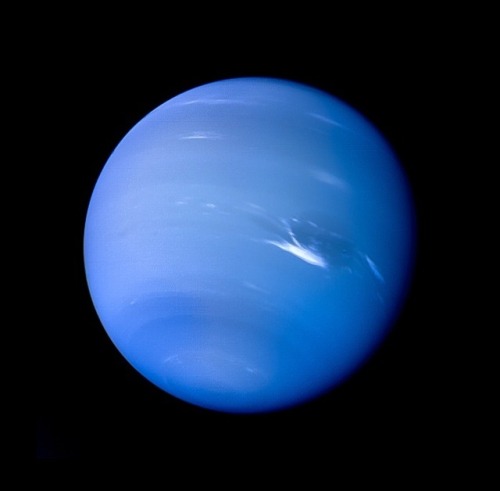
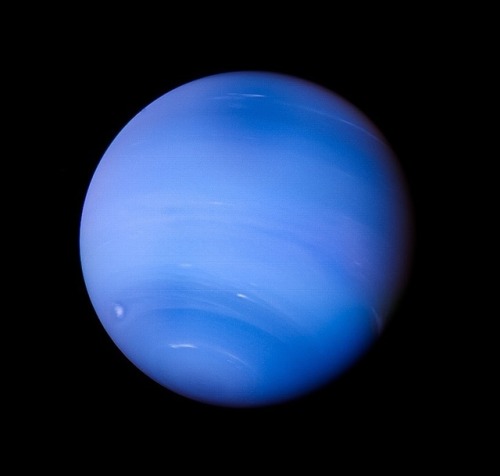
images of Neptune taken by Voyager 2 on August 24 1989.
Credit: NASA/JPL-Caltech/Kevin M. Gill

Halley’s Comet on 8 March 1986
Credit: NASA/W. Liller
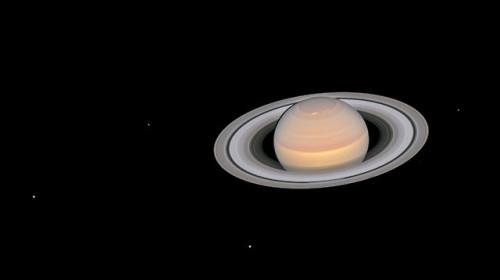
Saturn and its moons at opposition (The visible moons are (from left to right) Dione, Enceladus, Tethys, Janus, Epimetheus and Mimas
Credit: NASA, ESA, A. Simon (GSFC) and the OPAL Team, and J. DePasquale (STScI)
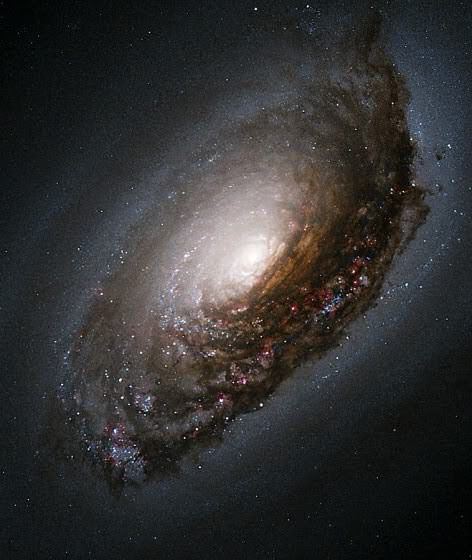
M64, The Black Eye Galaxy

Sunflower Galaxy
“The most exciting phrase to hear in science, the one that heralds new discoveries, is not ‘Eureka!’ (I’ve found it!), but ‘That’s funny…’”
— Isaac Asimov | Author - I, Robot | Professor - Biochemistry
The Opportunity to Rove on Mars! 🔴
Today, we’re expressing gratitude for the opportunity to rove on Mars (#ThanksOppy) as we mark the completion of a successful mission that exceeded our expectations.
Our Opportunity Rover’s last communication with Earth was received on June 10, 2018, as a planet-wide dust storm blanketed the solar-powered rover’s location on the western rim of Perseverance Valley, eventually blocking out so much sunlight that the rover could no longer charge its batteries. Although the skies over Perseverance cleared, the rover did not respond to a final communication attempt on Feb. 12, 2019.
As the rover’s mission comes to an end, here are a few things to know about its opportunity to explore the Red Planet.
90 days turned into 15 years!
Opportunity launched on July 7, 2003 and landed on Mars on Jan. 24, 2004 for a planned mission of 90 Martian days, which is equivalent to 92.4 Earth days. While we did not expect the golf-cart-sized rover to survive through a Martian winter, Opportunity defied all odds as a 90-day mission turned into 15 years!

The Opportunity caught its own silhouette in this late-afternoon image taken in March 2014 by the rover’s rear hazard avoidance camera. This camera is mounted low on the rover and has a wide-angle lens.
Opportunity Set Out-Of-This-World Records
Opportunity’s achievements, including confirmation water once flowed on Mars. Opportunity was, by far, the longest-lasting lander on Mars. Besides endurance, the six-wheeled rover set a roaming record of 28 miles.

This chart illustrates comparisons among the distances driven by various wheeled vehicles on the surface of Earth’s moon and Mars. Opportunity holds the off-Earth roving distance record after accruing 28.06 miles (45.16 kilometers) of driving on Mars.
It’s Just Like Having a Geologist on Mars
Opportunity was created to be the mechanical equivalent of a geologist walking from place to place on the Red Planet. Its mast-mounted cameras are 5 feet high and provided 360-degree two-eyed, human-like views of the terrain. The robotic arm moved like a human arm with an elbow and wrist, and can place instruments directly up against rock and soil targets of interest. The mechanical “hand” of the arm holds a microscopic camera that served the same purpose as a geologist’s handheld magnifying lens.

There’s Lots to See on Mars
After an airbag-protected landing craft settled onto the Red Planet’s surface and opened, Opportunity rolled out to take panoramic images. These images gave scientists the information they need to select promising geological targets that tell part of the story of water in Mars’ past. Since landing in 2004, Opportunity has captured more than 200,000 images. Take a look in this photo gallery.

From its perch high on a ridge, the Opportunity rover recorded this image on March 31, 2016 of a Martian dust devil twisting through the valley below. The view looks back at the rover’s tracks leading up the north-facing slope of “Knudsen Ridge,” which forms part of the southern edge of “Marathon Valley
There Was Once Water on Mars?!
Among the mission’s scientific goals was to search for and characterize a wide range of rocks and soils for clues to past water activity on Mars. In its time on the Red Planet, Opportunity discovered small spheres of the mineral hematite, which typically forms in water. In addition to these spheres that a scientist nicknamed “blueberries,” the rover also found signs of liquid water flowing across the surface in the past: brightly colored veins of the mineral gypsum in rocks, for instance, which indicated water flowing through underground fractures.

The small spheres on the Martian surface in this close-up image are near Fram Crater, visited by the Opportunity rover in April 2004.
For more about Opportunity’s adventures and discoveries, see: https://go.nasa.gov/ThanksOppy.
Make sure to follow us on Tumblr for your regular dose of space: http://nasa.tumblr.com

Tools of the Trade: How Parker Solar Probe Will Study the Sun
Our Parker Solar Probe will get closer to the Sun than any spacecraft has ever gone – it will fly right through the Sun’s corona, part of the Sun’s atmosphere.

This spacecraft is full of cutting-edge technology, from its heat shield down to its guidance and control systems. It also carries four suites of advanced instruments designed to study the Sun in a multitude of ways.
1. Measuring particles
Two of Parker Solar Probe’s instrument suites are focused on measuring particles – electrons and ions – within the corona.
One of these particle-measuring instrument suites is SWEAP (Solar Wind Electrons Alphas and Protons). SWEAP counts the most common particles in the solar wind – the Sun’s constant outflow of material – and measures their properties, like velocity, density and temperature. Gathering this information about solar wind particles will help scientists better understand why the solar wind reaches supersonic speeds and exactly which part of the Sun the particles come from.

One instrument in the SWEAP suite is the Solar Probe Cup. Most of the instruments on Parker Solar Probe stay safe and cool in the shadow of the heat shield, but the Solar Probe Cup is one of the few that sticks out. That’s so it can capture and measure particles streaming straight out from the Sun, and it had to go through some intense testing to get ready for this position in the Sun’s incredibly hot corona.

Credit: Levi Hutmacher/Michigan Engineering
The ISʘIS suite (pronounced EE-sis, and including the symbol for the Sun in its acronym) also measures particles. ISʘIS is short for Integrated Science Investigation of the Sun, and this instrument suite measures particles that move faster – and therefore have more energy – than the solar wind.
These measurements will help scientists understand these particles’ lifecycles – where they came from, how they got to be traveling so fast (these particles can reach speeds more than half the speed of light!) and what path they take as they travel away from the Sun and into interplanetary space.

2. Taking pictures – but not of the Sun’s surface.
WISPR (Wide-Field Imager for Parker Solar Probe) has the only two cameras on Parker Solar Probe – but they’re not pointed directly at the Sun. Instead, WISPR looks out the side of the spacecraft, in the direction it’s traveling, looking at the space Parker Solar Probe is about to fly through. From that vantage point, WISPR captures images of structures within the corona like coronal mass ejections, or CMEs. CMEs are clouds of solar material that occasionally explode from the Sun at millions of miles per hour. Because this solar material is magnetized, CMEs can trigger geomagnetic storms when they reach Earth – which, in turn, can cause effects like auroras and even, in extreme cases, power outages.

Right now, our observations of events like these come from satellites orbiting near Earth, so WISPR will give us a whole new perspective. And, scientists will be able to combine WISPR’s images with Parker Solar Probe’s direct particle measurements to get a better idea of how these structures change as they travel.

3. Studying electric & magnetic fields
The FIELDS instrument suite is appropriately named: It’s what scientists will use to study the electric and magnetic fields in the corona.
Electric and magnetic fields are key to understanding what happens, not only on the Sun, but throughout space, because they are the primary driver accelerating charged particles. In particular, a process called magnetic reconnection – when magnetic field lines explosively realign, sending particles rocketing away at incredible speeds – is thought to drive solar explosions, as well as space weather effects on Earth, like the aurora.

FIELDS measures electric and magnetic field at high time resolution, meaning it takes lots of measurements in a short amount of time, to track these processes and shed some light on the mechanics underlying the Sun’s behavior. FIELDS’ measurements are precisely synced up with those of the SWEAP suite (one of the sets of instruments studying particles) so that scientists can match up the immediate effects that electric and magnetic fields have on the material of the solar wind.

Parker Solar Probe launches summer 2018 on its mission to study the Sun. Keep up with the latest on the mission at nasa.gov/solarprobe or follow us on Twitter and Facebook.
Make sure to follow us on Tumblr for your regular dose of space: http://nasa.tumblr.com.
-
 spookysublimeprincess liked this · 1 week ago
spookysublimeprincess liked this · 1 week ago -
 macmanusf-blog reblogged this · 1 week ago
macmanusf-blog reblogged this · 1 week ago -
 macmanusf-blog liked this · 1 week ago
macmanusf-blog liked this · 1 week ago -
 belovedmidnighttalks liked this · 1 month ago
belovedmidnighttalks liked this · 1 month ago -
 sea70 liked this · 1 month ago
sea70 liked this · 1 month ago -
 evefromthenorth liked this · 2 months ago
evefromthenorth liked this · 2 months ago -
 eclectichellmouth reblogged this · 2 months ago
eclectichellmouth reblogged this · 2 months ago -
 forevermoon reblogged this · 2 months ago
forevermoon reblogged this · 2 months ago -
 lathander-babe liked this · 2 months ago
lathander-babe liked this · 2 months ago -
 lavenderstratosphere reblogged this · 2 months ago
lavenderstratosphere reblogged this · 2 months ago -
 lavenderstratosphere liked this · 2 months ago
lavenderstratosphere liked this · 2 months ago -
 ellasinnombre reblogged this · 2 months ago
ellasinnombre reblogged this · 2 months ago -
 dag--dag reblogged this · 2 months ago
dag--dag reblogged this · 2 months ago -
 stardustinthesky reblogged this · 2 months ago
stardustinthesky reblogged this · 2 months ago -
 flakita01 reblogged this · 3 months ago
flakita01 reblogged this · 3 months ago -
 cultureshocked liked this · 4 months ago
cultureshocked liked this · 4 months ago -
 referenciacensurada reblogged this · 4 months ago
referenciacensurada reblogged this · 4 months ago -
 meatbiter reblogged this · 4 months ago
meatbiter reblogged this · 4 months ago -
 meatbiter liked this · 4 months ago
meatbiter liked this · 4 months ago -
 dreamsarethings reblogged this · 6 months ago
dreamsarethings reblogged this · 6 months ago -
 backman13 reblogged this · 6 months ago
backman13 reblogged this · 6 months ago -
 hime-ariii liked this · 6 months ago
hime-ariii liked this · 6 months ago -
 anna35foc liked this · 6 months ago
anna35foc liked this · 6 months ago -
 olithegeek liked this · 6 months ago
olithegeek liked this · 6 months ago -
 infiniteeighthfloor reblogged this · 6 months ago
infiniteeighthfloor reblogged this · 6 months ago -
 tepagoumrefri liked this · 6 months ago
tepagoumrefri liked this · 6 months ago -
 helewis liked this · 6 months ago
helewis liked this · 6 months ago -
 solar-edens reblogged this · 6 months ago
solar-edens reblogged this · 6 months ago -
 marz-likes-palaces liked this · 6 months ago
marz-likes-palaces liked this · 6 months ago -
 sketchpaperacidfree liked this · 6 months ago
sketchpaperacidfree liked this · 6 months ago -
 sl33py-dy liked this · 6 months ago
sl33py-dy liked this · 6 months ago -
 masked-ragdoll liked this · 6 months ago
masked-ragdoll liked this · 6 months ago -
 myrskyisaa liked this · 6 months ago
myrskyisaa liked this · 6 months ago -
 sleepiestbutterfly liked this · 6 months ago
sleepiestbutterfly liked this · 6 months ago -
 culturalspartanpw reblogged this · 6 months ago
culturalspartanpw reblogged this · 6 months ago -
 discorib reblogged this · 6 months ago
discorib reblogged this · 6 months ago -
 kanene-yaaay-o-retorno reblogged this · 6 months ago
kanene-yaaay-o-retorno reblogged this · 6 months ago -
 kanene-yaaay-o-retorno liked this · 6 months ago
kanene-yaaay-o-retorno liked this · 6 months ago -
 tems-s reblogged this · 6 months ago
tems-s reblogged this · 6 months ago -
 gamegarden reblogged this · 6 months ago
gamegarden reblogged this · 6 months ago -
 gamegarden liked this · 6 months ago
gamegarden liked this · 6 months ago -
 wsdalt reblogged this · 6 months ago
wsdalt reblogged this · 6 months ago -
 gayorphandepression reblogged this · 6 months ago
gayorphandepression reblogged this · 6 months ago -
 ratatouier reblogged this · 6 months ago
ratatouier reblogged this · 6 months ago -
 routeriver reblogged this · 6 months ago
routeriver reblogged this · 6 months ago -
 xurviving reblogged this · 6 months ago
xurviving reblogged this · 6 months ago -
 galahad1155 reblogged this · 7 months ago
galahad1155 reblogged this · 7 months ago -
 galahad1155 liked this · 7 months ago
galahad1155 liked this · 7 months ago